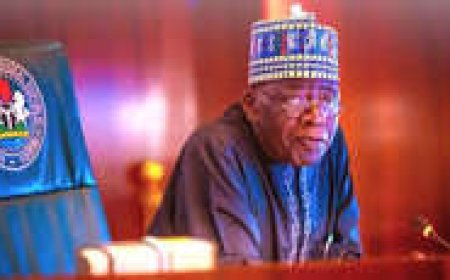By Ikeddy ISIGUZO
FOR most of Tuesday I started doubting if there were two refineries in Port Harcourt after those I spoke with insisted that there was one refinery in Port Harcourt, the one that the Nigerian National Petroleum Company Limited, NNPCL, announced its triumphant return to production.
They kept calling it "the old refinery" without interrogating the meaning of that phrase.
But Port Harcourt has a second refinery of 150,000 barrels per day that was commissioned in 1989. It hardly gets mentions these days. Has it been forgotten?
We were still on the morning of what NNPCL and its trumpeters are celebrating as if NNPCL had leapt into life and grown capacities to supply the entire ECOWAS sub-region with petroleum products. What were the celebrations about?
NNPCL had woken up 70 per cent of a 1965 refinery that has capacities to refine 60,000 barrels of crude oil daily. After countless announcements about the refinery's re-opening day, it is running with 42,000 barrels daily from which NNPCL is squeezing out 1.4 million litres of petrol, and other products, daily. We are not told where NNPCL gets its crude oil and at what price.
Stakeholders, as they call themselves, have joined in the cacophony of claims. Some insiders prompted SaharaReporters that the "good news from Port Harcourt" was a façade. The refining, according to the online medium, was mere blending of products that NNPCL brought in at different stages of refining.
Timothy Mgbere, Secretary of the Alesa community stakeholders, alleged on national television that the refinery only loaded six trucks of petroleum products on Tuesday though NNPCL had said it would do 200 trucks daily.
“The economic activities emanating from the operations of these depots mean a lot to us as a community, but as it were, now, I don’t think it’s a cause for celebration yet because what we are having in the media space is different from what we have on the ground.
“I can tell you on authority as a community person, that what happened on Tuesday was just a mere show at the Port Harcourt depot. Port Harcourt refinery, we call it Area Five, that is the old refinery, is merely in skeletal operation. Some units of the refinery were brought up and are running, but not the entire unit of the old refinery is functional, as we speak.
“I will give them the credit that at least they have started something, but not to say, according to the Head of Corporate Communication, Femi Soneye, like it is in the media that they are already producing 1.4m barrels per day. That’s not the case. That’s not true. As an agency that is holding the oil industry in trust for Nigerians, they shouldn’t put out information that is not true.”
“What they did was to release that (old) stock, and then loaded six trucks and then televised it to Nigerians that it is the production from the old refinery. And so I like Nigerians to know the truth, but they don’t need to believe me, because Nigerians, no matter how you paint the true pictures to them, they get sentimental. But let it be on record that it was only six trucks that they used to calibrate the new loading gantry. The product was not a new refined product from the old refinery.”
He continued, "As of yesterday (Wednesday), they also loaded. But let me shock you if we are celebrating that the Port Harcourt old refinery is already functioning. How come they loaded only four trucks of product the whole day? I mean, starting from 7am when work resumed at the depot, it was only four trucks that were loaded till about 8pm of Wednesday.
“And they said it’s automated. How can you have a truck under a bay for more than six hours under an automated system? Back in the years when we had a manual loading system, It didn’t take 45 minutes, but under an automated system, it took more than four hours. And then you tell us, it is 70 per cent operational? Who are they deceiving?"
"This betrays his scant knowledge of the operations of the refinery. The old and new Port Harcourt Refineries have since been integrated with one single terminal for product load-out.
“They share common utilities like power and storage tanks. This means that storage tanks and loading gantry which he claimed belongs to the new Port Harcourt Refinery can also receive products from the Old Port Harcourt Refinery,” Soneye explained.
Lanre Ogundipe, a former President of the Nigerian Union of Journalists, NUJ, on Friday issued a press release accusing NNPCL of misleading the public.
“The celebrations that attended the announced resuscitation of the moribund Port Harcourt Refinery are immature going by the available fact which has not been contradicted by officials of NNPCL, led by Mr. Mele Kyari.
“Without fear of any contradiction, what has been achieved so far, is that only some units of the old refinery have been activated while work at the facility was at a skeletal level. Though some progress has been made, which stands the NNPCL in good stead to announce that they have flagged off something, that is not to say, that they are already producing 1 million, 400,000 barrels per day. That is not the case and that is not true. Such a claim, credited to the Head of Corporate Communications of NNPCL, is a fraudulent one which has to be proven beyond a reasonable doubt.
“As it stands, let it be clear that no single product has been moved from the Port Harcourt refinery area into the product reception area of the depot."
With the way we run Nigeria, NNPCL has been very courteous. Some other organisations would have asked us "to go to court". There are two refineries in Port Harcourt "old" and "new" with a combined daily refining capacity of 210,000 barrels. NNPCL is saying nothing about the "new refinery" that was commissioned in 1989. Why is that so?
If NNPCL wants to measure the completion level of the old refinery it borrows parts from the new refinery and reminds us that the two "have been integrated". With the integration, what is the daily refining capacity of the 210, 000-barrel facility?
Reading 'How to Lie with Statistics', a book that journalist, Darrell Huff wrote in 1954, one would notice that NNPCL cherry-picked statistics. There is little effort to illuminate the issues.
NNPCL was intentional in distracting the public with an orchestrated celebration that it expected to foreclose any questions on key issues that should include pricing. It almost succeeded.
The Minister of Petroleum, President Bola Ahmed Tinubu, found time on his busy schedule in the chilly settings of Paris to congratulate NNPCL. "With the successful revival of the Port Harcourt Refinery, President Tinubu urged NNPC Limited, to expedite the scheduled reactivation of both the second Port Harcourt Refinery, Warri and Kaduna refineries," an official State House message, issued from Paris, read.
Let it be on record that the President, who is the Minister of Petroleum, counts two refineries in Port Harcourt. NNPCL says we have one refinery in Port Harcourt. If you admit that we count differently, you would agree that the President and NNPCL could be saying 70 per cent of the same thing.
In fairness to NNPCL, the ambitions on refineries in Warri, Kaduna, and Port Harcourt II, are entirely the President's.
NNPCL can, however, answer these marginal questions. How would 1.4 million litres of petrol impact on Nigeria's daily consumption that swung from 60 million litres daily in May 2023 to 4.5 million litres a day by August 2024? The data are from the Nigerian Midstream and Downstream Petroleum Regulatory Authority. The 92 per cent drop is attributed to the cancellation(?) of subsidy.
What would be the pump price now that Port Harcourt is working and producing about a third of our daily consumption? How long would it take to attain 100 per cent production? Are these productions immune from slipping across the border?
The taste of the pudding, they say, is in the eating. North Africans put it better when they say the taste of the couscous is in the digestion.
NNPCL has succeeded largely in tickling the public's appetite for petrol. The pump price will be the best proof of NNPCL's 70 per cent of Port Harcourt.
Finally...
Tintinnabulation is an 18th-century word that has nothing to do with the President's name. If you are in doubt, please find out.
ISIGUZO is a major commentator on minor issues



































































